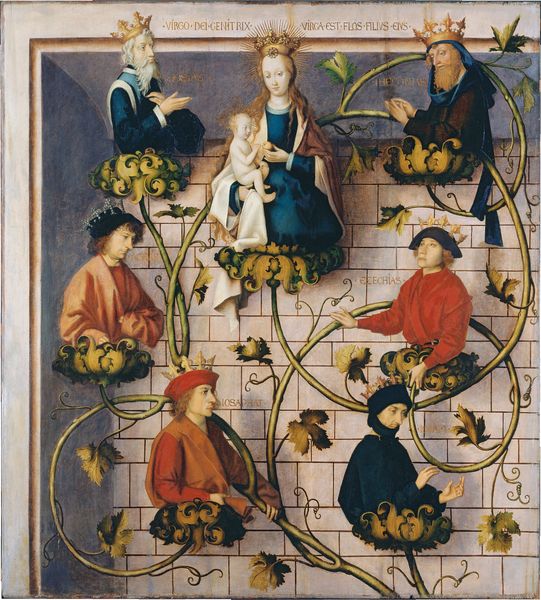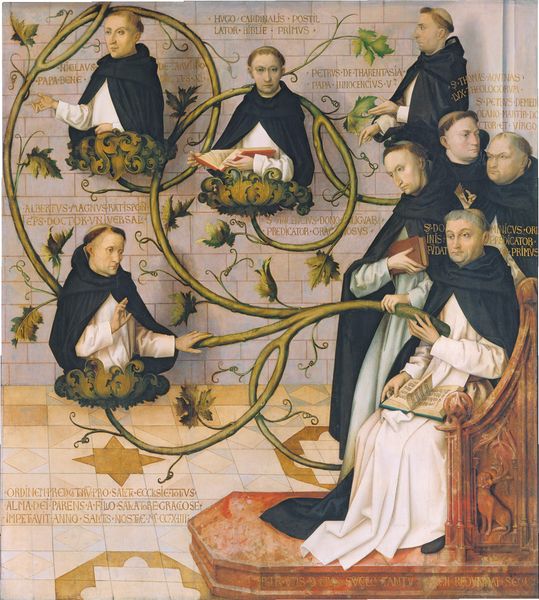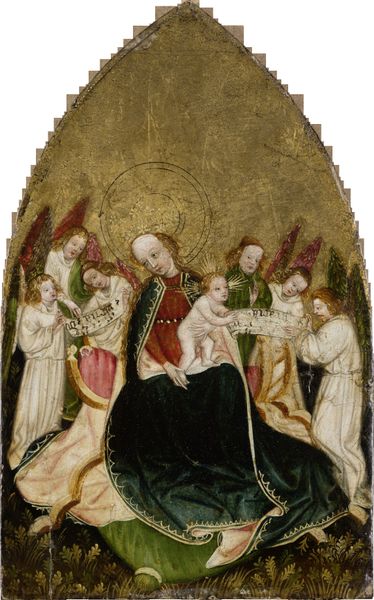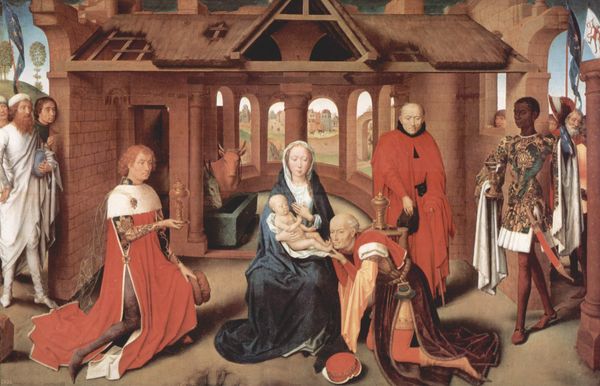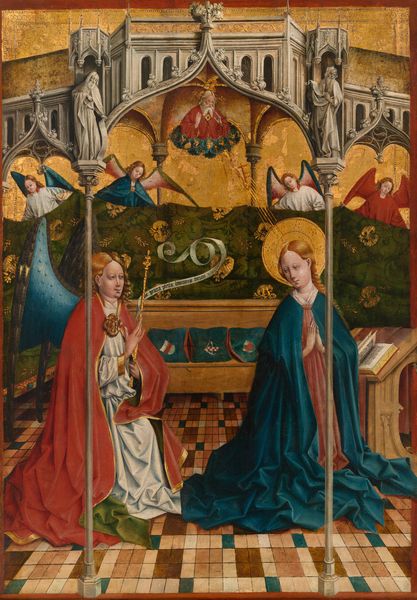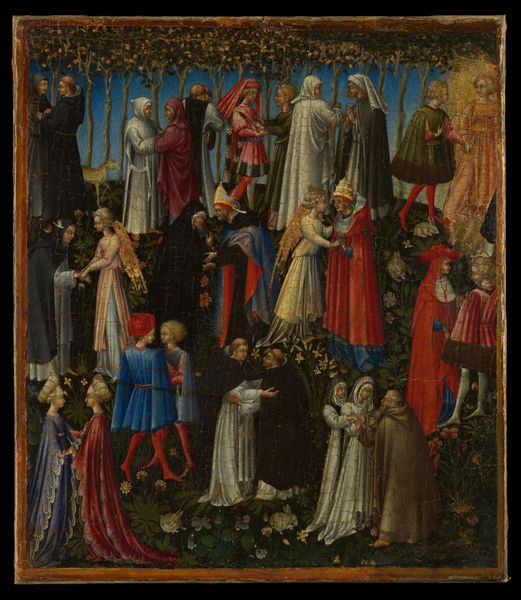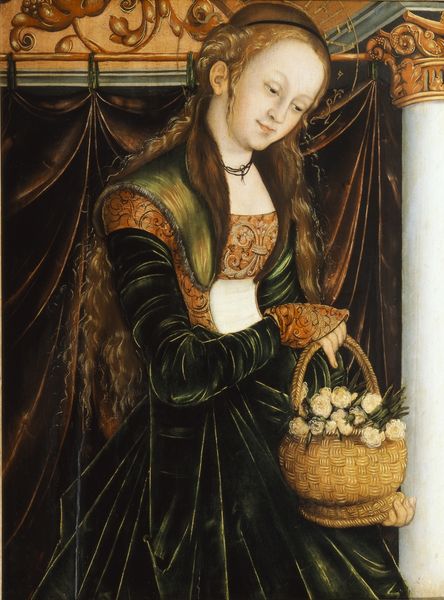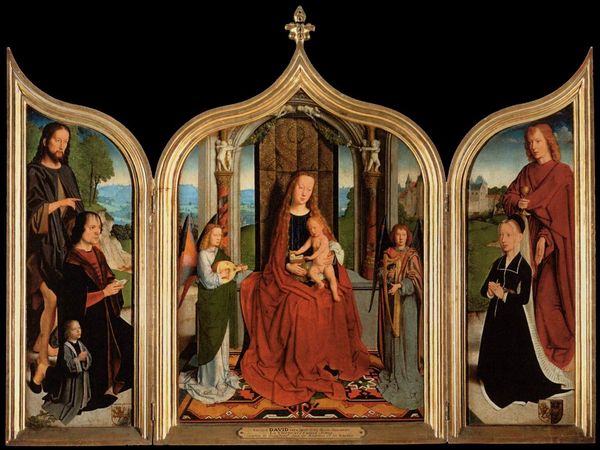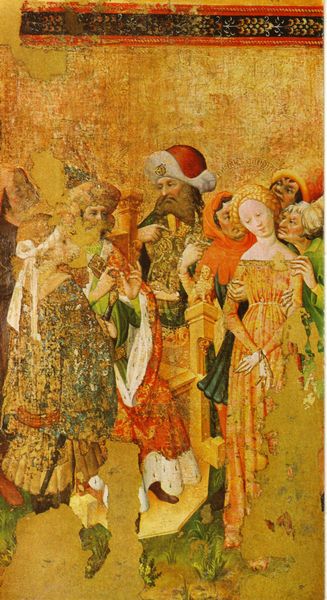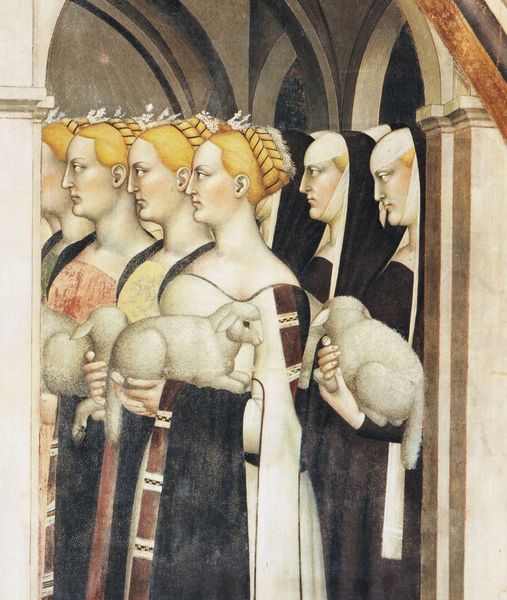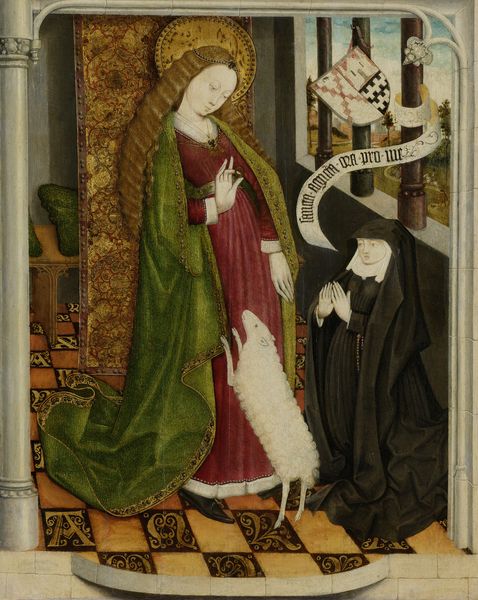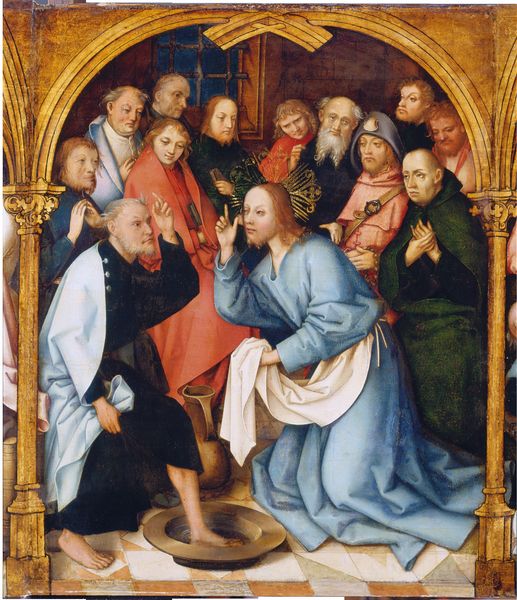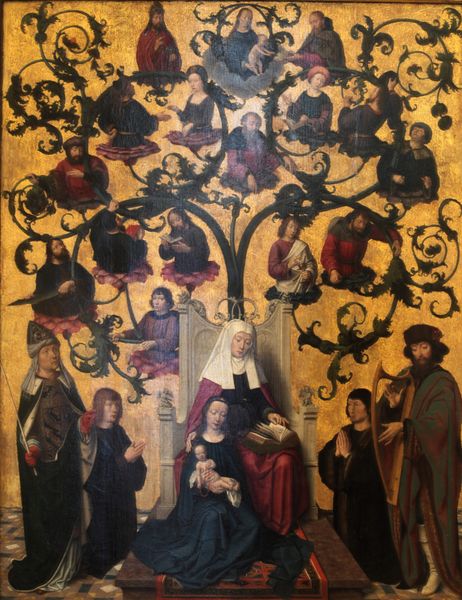
painting, oil-paint
#
portrait
#
painting
#
oil-paint
#
11_renaissance
#
oil painting
#
history-painting
#
italian-renaissance
Dimensions: 166.4 x 150.6 cm
Copyright: Public Domain
Curator: As you approach this painting, note its meticulous execution. What strikes you initially about "Lineage of the Dominican Order," created around 1501 by Hans Holbein the Elder? Editor: Well, I'm immediately drawn to its sort of diagrammatic quality. It looks more like an illuminated page from a botanical or medical textbook than a traditional religious artwork. The way the figures are organized along the vine, almost like specimens, is really intriguing. Curator: Indeed. Holbein has presented us with a complex visual history, or perhaps a genealogical tree of the Dominican Order. He was clearly invested in depicting the making and materials involved in the order’s presence through generations of skilled people. Editor: You can tell how art academies used public commissions, especially from religious institutions like the Dominican Order to solidify their power, expand patronage, and promote specific iconographies across the late medieval period into the Renaissance. What a clever political operation disguised as devotion! Curator: Note how the composition guides your eye upwards along the tendrils of the vine. The virgin is up there along with key leaders. Editor: And the use of oil paint allows for this remarkable detail and the illusion of depth despite the painting's overall flatness. This meticulous process would require intense labour, reflecting the value placed on the creation and preservation of these images. The choice of color palette is also interesting, considering the period when they did not have a wide range available. Curator: What is even more remarkable is the amount of art that comes to define Italian Renaissance. Holbein carefully orchestrates our encounter with both the sacred and the worldly—the institution's legacy embedded right into the heart of artistic display. Editor: I’m still struck by this organizational approach. It reveals so much about the need for these orders to visualize their power. A visual assertion of authority, wouldn't you agree? Curator: Absolutely. And considering the materials—oil paint, panel—it speaks to both patronage and a desire for longevity. Editor: Well, thinking about its place in a modern collection, "Lineage of the Dominican Order" makes you consider how artworks get framed, both literally and figuratively, by the institutions that display them. Curator: A great point. Holbein offers us both an artistic achievement, but also a reminder of the very human systems behind religious institutions of this historical artwork.
Comments
Join the conversation
Join millions of artists and users on Artera today and experience the ultimate creative platform.
